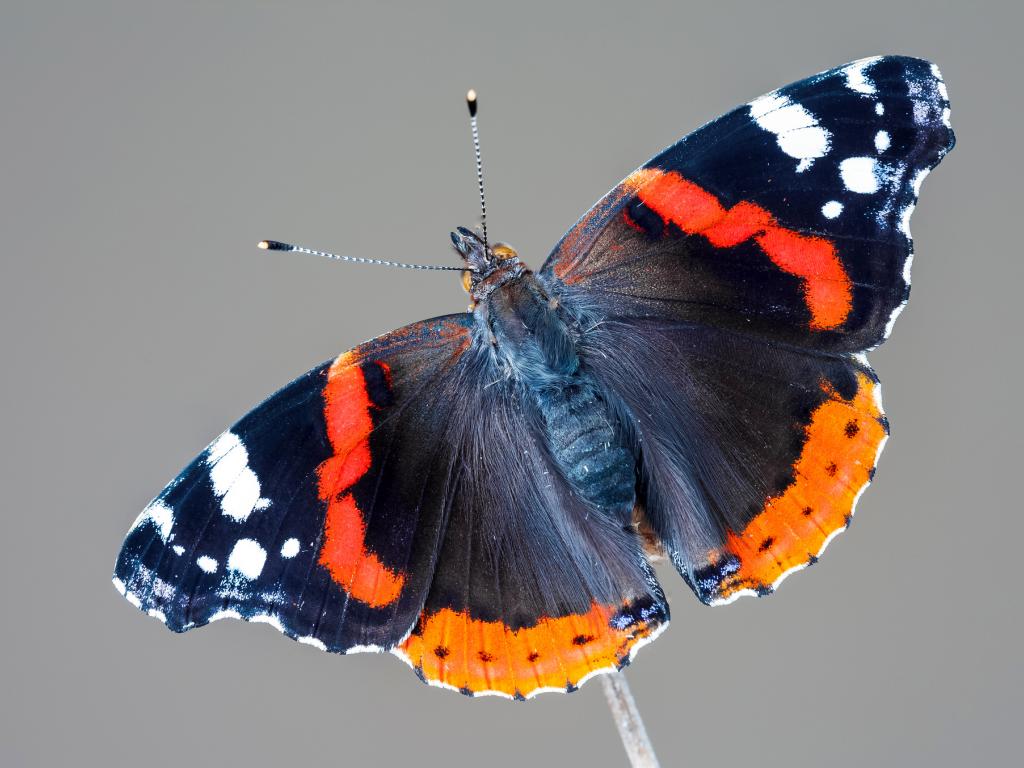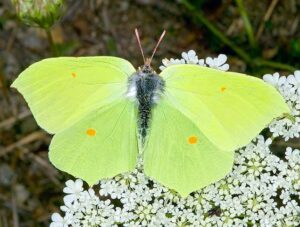A large and strong-flying butterfly and common in gardens. This familiar and distinctive insect may be found anywhere in Britain and Ireland and in all habitat types.
Starting each spring and continuing through the summer there are northward migrations, which are variable in extent and timing, from North Africa and continental Europe. The immigrant females lay eggs and consequently there is an emergence of fresh butterflies, from about July onwards. They continue flying into October or November and are typically seen nectaring on garden buddleias or flowering Ivy and on rotting fruit.
There is an indication that numbers have increased in recent years and that overwintering has occurred in the far south of England.
Size and Family
- Family: Nymphalids
- Size: Large
- Wing Span Range (male to female): 67-72mm
Conservation Status
- Butterfly Conservation priority: Low
- European status: Not assessed
Caterpillar Foodplants
In Britain and Ireland, the most important and widely available larval foodplant is Common Nettle (Urtica dioica). However, Small Nettle (U. urens) and the related species, Pellitory-of-the-wall (Parietaria judaica) and Hop (Humulus lupulus) may also be used.
Habitat
Can be found in almost any habitat from gardens to sea-shores and from town centres to the top of mountains!This butterfly can be found almost anywhere, from the seashore and town gardens, to the tops of the highest mountains.
This butterfly is unmistakable, with the velvety black wings intersected by striking red bands.
This butterfly is primarily a migrant to our shores, although sightings of individuals and immature stages in the first few months of the year, especially in the south of England, mean that this butterfly is now considered resident.
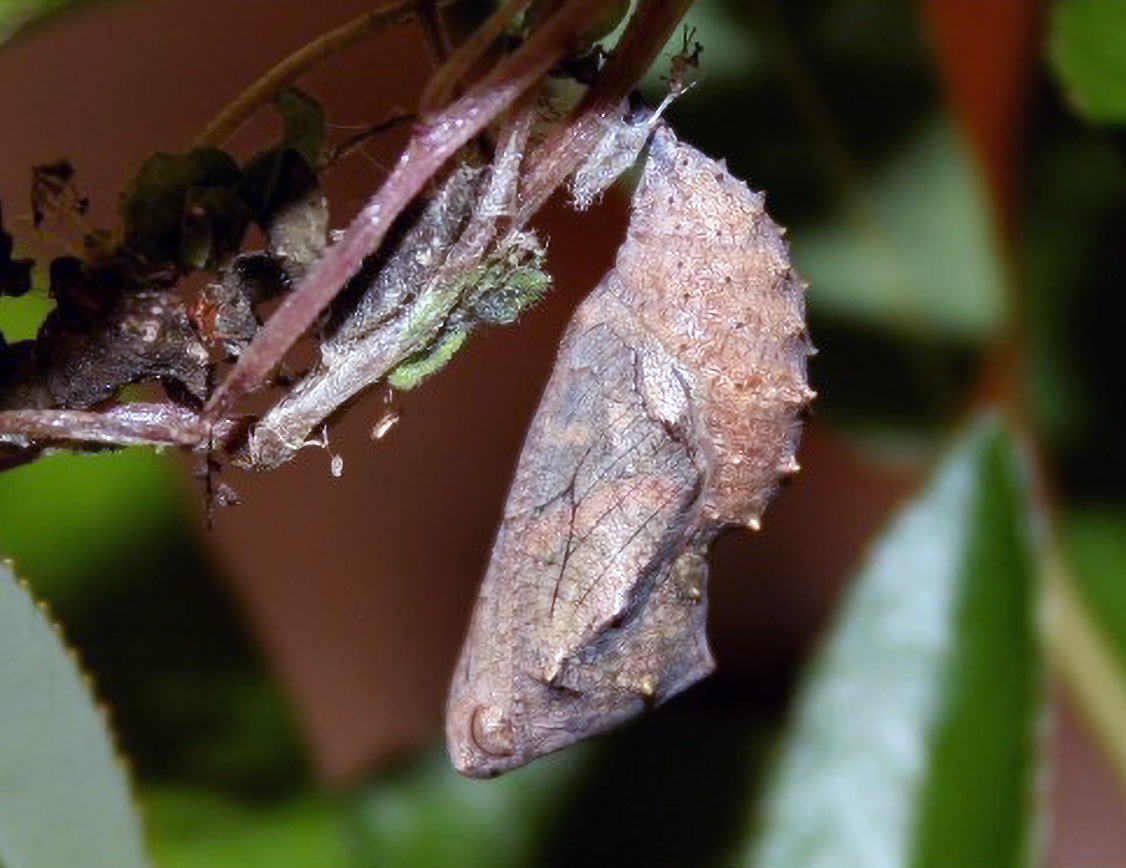
Here are some interesting facts about the Red Admiral butterfly, along with details on its habitat and life cycle:Interesting Facts:
- The Red Admiral (Vanessa atalanta) is a striking butterfly known for its black wings with red-orange bands and white spots.
- It is a strong flyer and regular migrant, found across North America, Europe, Asia, and parts of Africa.
- Red Admirals are considered “people-friendly” butterflies and often land on humans.
- Male Red Admirals are highly territorial and will aggressively chase away intruders from their chosen areas.
- Unlike many butterflies, Red Admirals prefer fermenting fruit, tree sap, and bird droppings over flower nectar.
- They have been observed engaging in “puddling” behavior, drinking from moist soil to obtain minerals.
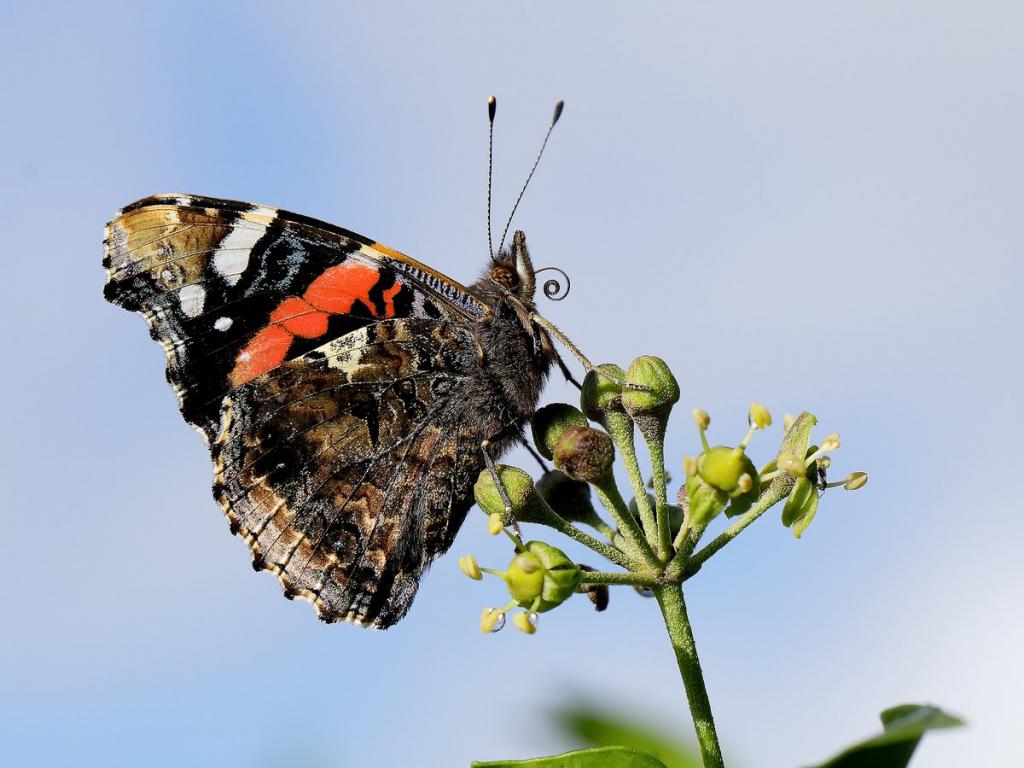
Habitat:
- Red Admirals can be found in a variety of habitats, including:
- They prefer moist environments with access to flowering plants and their larval host plants, primarily nettles.
Life Cycle:
Life Cycle and Migration
In North America there are two broods produced between March and October. Red Admiral eggs are green to cream in color and are covered in small hair-like structures, camouflaging on nettle leaves. Once they hatch the larva feed off the leaves of their host plant and grow to a length of about 1 ¼ inches (3.5 cm). When they are ready to pupate, they build a hanging chrysalis under the shade of a leaf that mimics the colors and textures of a dry, dead leaf, once again camouflaging with their surroundings. Unlike Monarch butterflies and others that have chemical defense that they can signal to potential predators with warming coloration, the Red Admirals are unprotected and must hide from the keen eyes of predators like birds. V. atalanta adults visit many flowers for nectar, but like other butterflies, also drink from moist water sources that provide minerals and electrolytes – this is called wicking. Butterflies can commonly be seen wicking near muddy puddles of water. Red Admirals are also known to drink tree sap and even wick from dung.
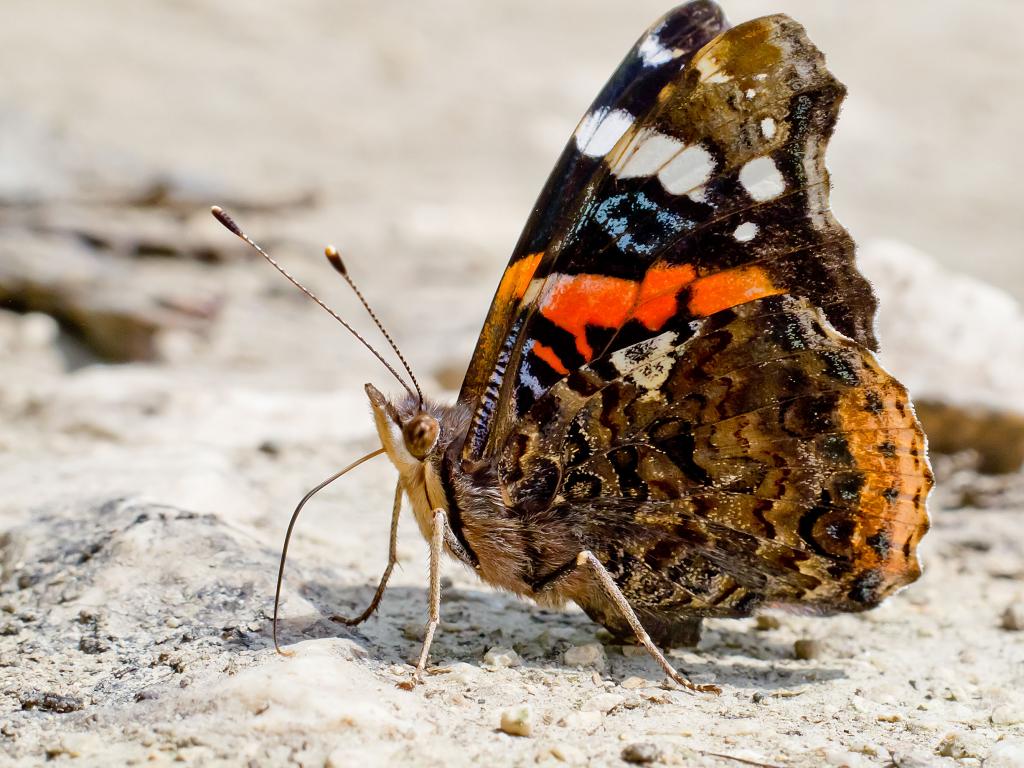
Butterflies that live in more northern latitudes migrate to the Southern states, like Texas, to avoid a loss of food resources in the winter. This migration is not as renowned as the journey that Monarchs takes across the continent but is a response of local populations seeking food sources throughout the year. Climate change patterns are expected to impact insect species that track plant populations – it will be interesting to see how the Red Admiral responds given its broad host plant range and geographic reach. As of yet, the species and genus is broadly distributed and in good ecological health, but, as with all pollinators, the loss of habitat can significantly impact species survival. These generalist feeders can be supported by planting nettles in gardens and providing other nectar plants throughout the year.
- Egg:
- Larva (Caterpillar):
- Pupa (Chrysalis):
- Adult:
The Red Admiral’s ability to migrate and adapt to various habitats has contributed to its widespread distribution. In recent years, there have been increasing reports of Red Admirals overwintering in milder southern regions, possibly due to climate change.
How do red admirals migrate to warmer climates
Red Admiral butterflies (Vanessa atalanta) exhibit fascinating migratory behavior to reach warmer climates. Here are the key aspects of their migration:
- Timing and Triggers:
- Migration typically occurs in autumn as temperatures drop.
- Changes in temperature, particularly decreasing minimum temperatures, serve as important cues to initiate migration.
- The exact timing can vary between years, with peak migration dates ranging from late August to early October.
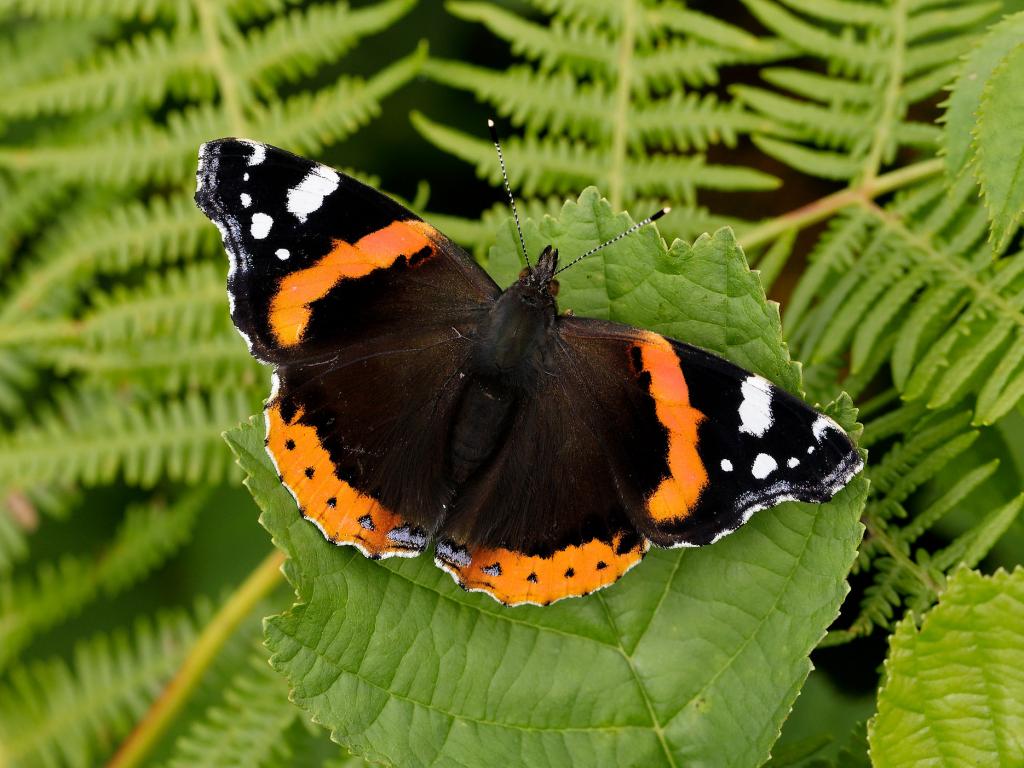
- Direction and Routes:
- In Europe, Red Admirals generally migrate from northern regions southward.
- They often travel from Northern Europe to the Mediterranean area.
- In North America, they follow similar patterns, moving from northern areas to southern regions.
- Flight Characteristics:
- Red Admirals are strong flyers capable of covering long distances.
- They can reach altitudes of up to 2,000 meters during migration.
- Most migrate within 2 meters of the ground, but some fly at higher elevations, making them harder to observe.
- Weather Conditions:
- They prefer to migrate on clear days with light winds, typically from the northeast.
- Red Admirals often take advantage of northerly winds to aid their southward journey.
- They rarely migrate under cloudy conditions or when wind speeds exceed 5 m/s.
- Population Dynamics:
- Not all individuals migrate; some may attempt to overwinter in milder areas.
- The proportion of migrating butterflies can vary between years and locations.
- Remarkable Abilities:
- Red Admirals can fly at temperatures as low as 2°C during migration.
- They use the sun for orientation and can maintain their course during flight.
- Coastal Behavior:
It’s worth noting that while Red Admirals exhibit impressive migratory behavior, the exact mechanisms and full extent of their migration are still subjects of ongoing research. The flexibility in their migration patterns allows them to adapt to changing environmental conditions and ensures their survival across their wide geographical range.
The Red Admiral Butterfly – Vanessa atalanta
If you are walking through a park on a sunny day or working in your garden you might have encountered some of these brightly-colored chaotic fliers flutter past you and even land on your clothing – these feisty but people-friendly butterflies are one of the most common species seen in North America and across the world.
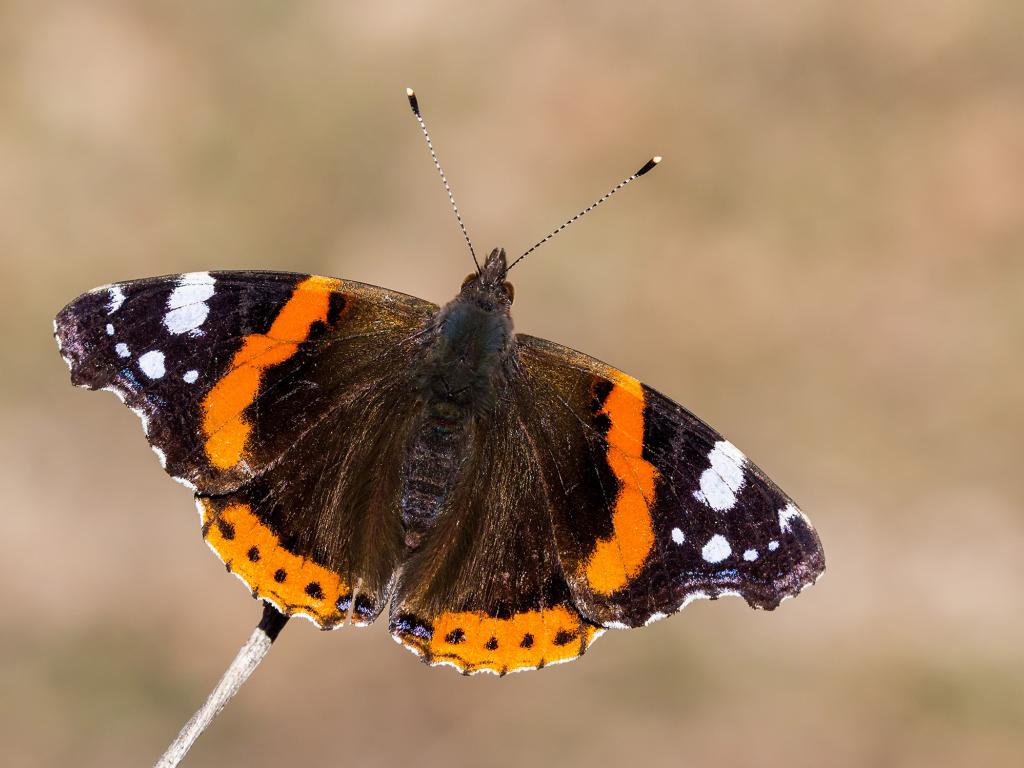
Red Admiral butterflyAdult Red Admiral – Photo Credit: Shady Oak Butterfly FarmThe Red Admiral butterfly (Vanessa atalanta) has a distribution that covers North and South America, Europe, and Asia. The diverse range of this butterfly corresponds to an equally diverse set of larval host plants used by this species. Red Admirals use all members of the nettles family (Urticaceae) as their host plants. This includes more than 50 different plant genera – far broader than other common butterflies like Monarchs that use only milkweeds. Nettles are distributed globally and are a successful plant group that commonly has a weedy habit. Finding these plants in urban or disturbed landscapes is not uncommon and they are perhaps why the Red Admiral is the most popular butterfly sighted in urban landscapes.
Why do red admirals prefer certain plants like stinging nettle
Red admiral butterflies prefer certain plants like stinging nettle for several key reasons:
- Host plant for larvae: Stinging nettle (Urtica dioica) is the primary host plant for red admiral caterpillars. The larvae feed exclusively on plants in the nettle family (Urticaceae), including false nettle (Boehmeria cylindrica) and wood nettle (Laportea canadensis).
- Widespread availability: Nettles are abundant and widely distributed across the red admiral’s range, growing in various habitats including woodlands, fields, and urban areas. This widespread availability of host plants contributes to the butterfly’s success and broad distribution.
- Nutritional value: Nettle leaves provide essential nutrients for caterpillar growth and development. The caterpillars go through five molts over 3-4 weeks while feeding on nettle leaves.
- Protective habitat: Red admiral caterpillars create leaf nests on their host plants, which provide shelter and protection from predators. This behavior is specifically adapted to nettle plants.
- Evolutionary adaptation: Over time, red admirals have evolved to utilize nettles as their primary food source, developing resistance to the plant’s stinging hairs that deter other herbivores.
- Migratory patterns: The availability of nettles in various regions allows red admirals to successfully complete multiple generations as they migrate, with new generations emerging in different areas throughout the season.
- Urban tolerance: Since nettles can grow in disturbed and urban environments, red admirals can thrive in a variety of habitats, including cities.
By specializing on nettles and related plants, red admirals have secured a reliable food source for their offspring and adapted to survive in diverse environments. This specialization has contributed to their success as a species and their widespread distribution across multiple continents.

